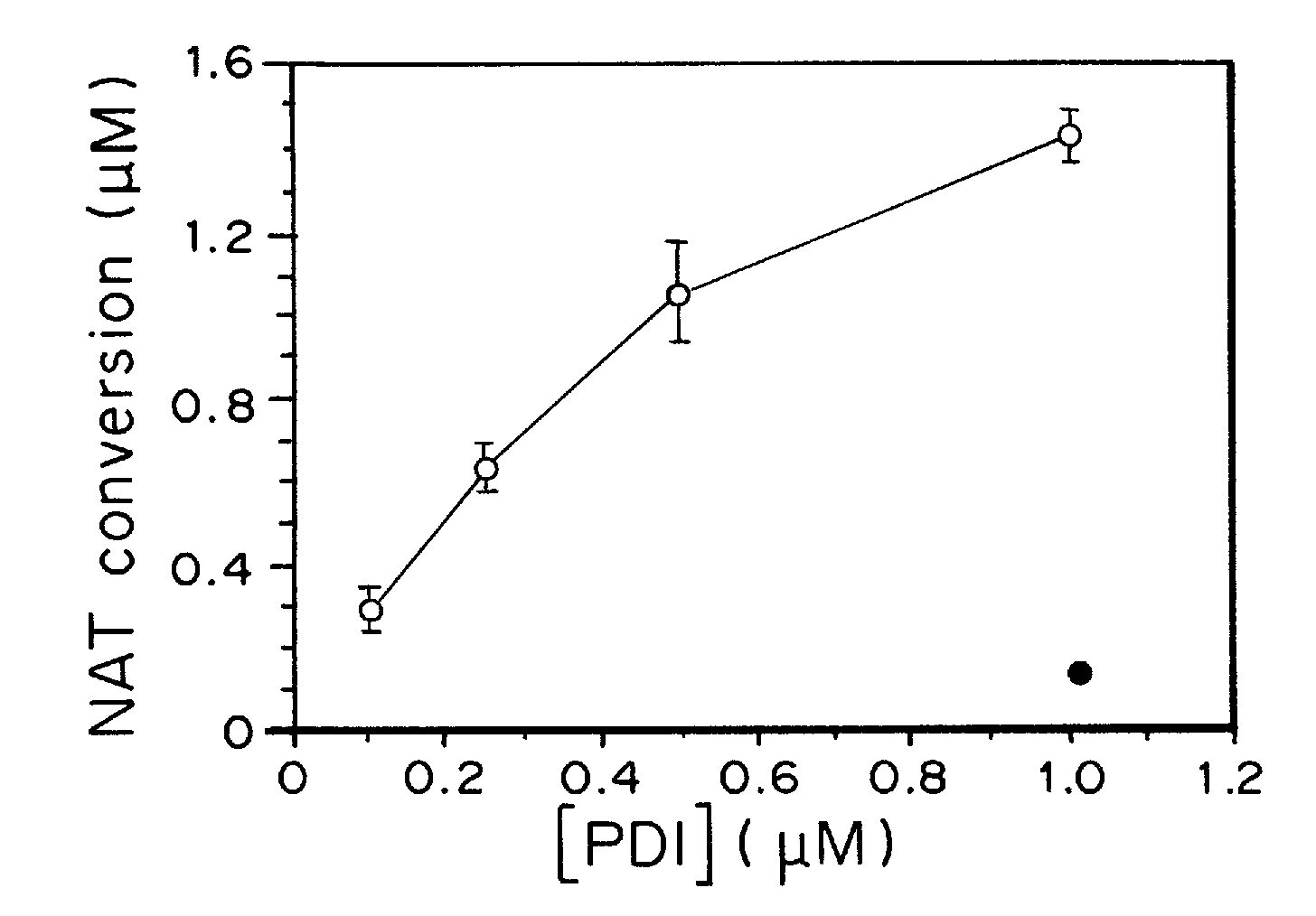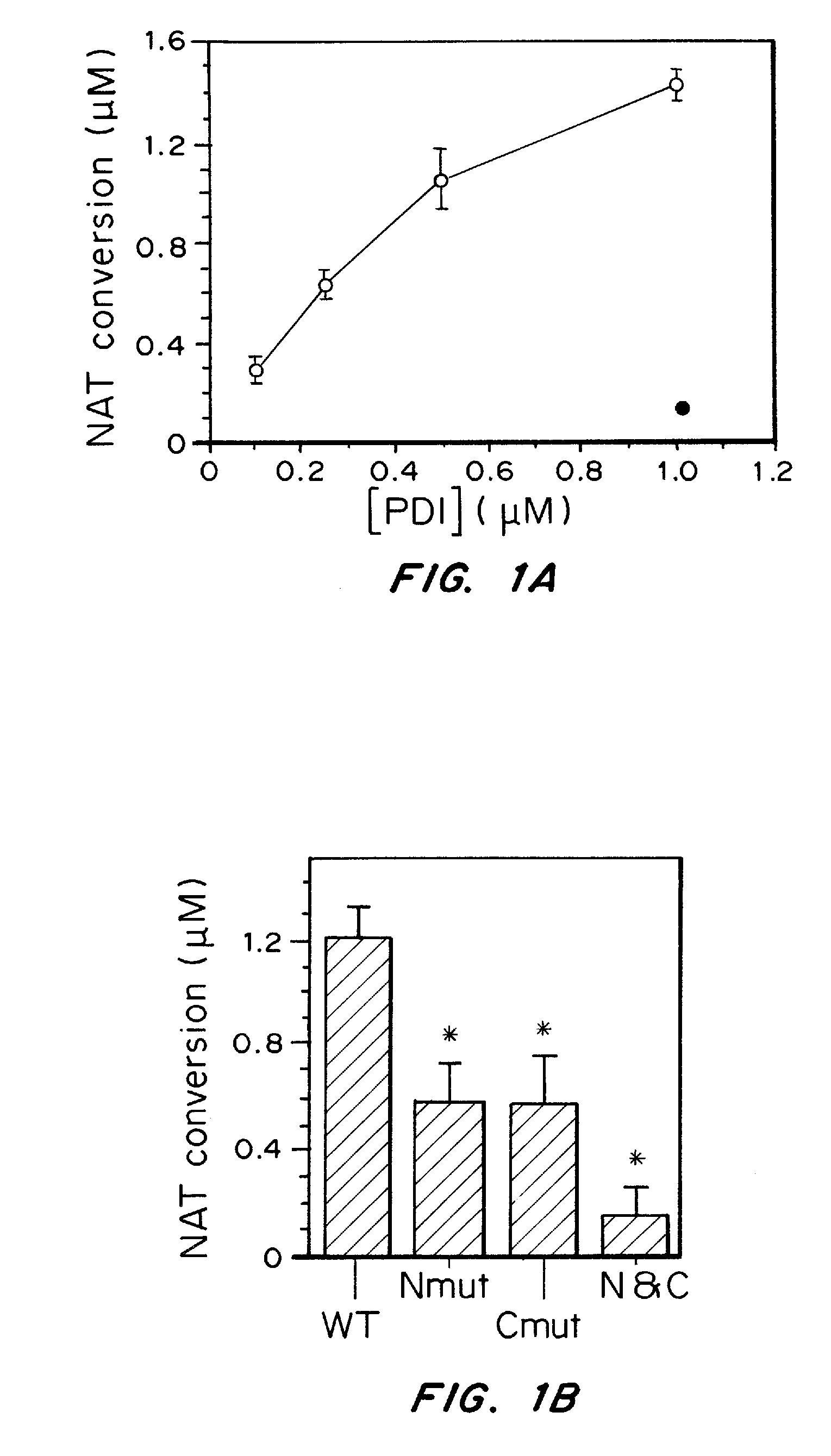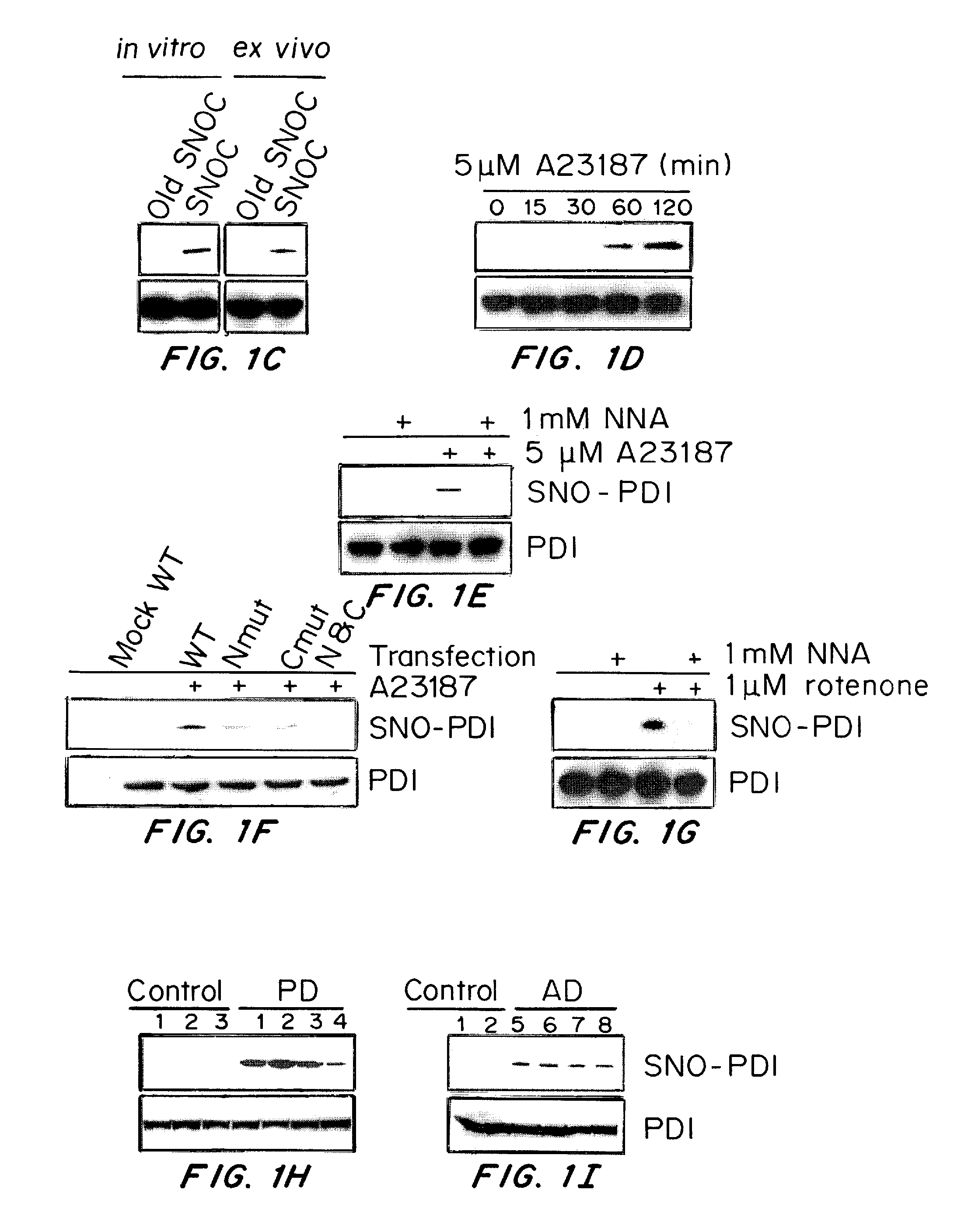Pathologically-activated therapeutics
a therapeutic and activation technology, applied in the field of therapeutics and treatment, can solve the problems of low affinity of drugs, many if, drugs, especially when developed against targets in the brain, manifest unacceptable clinical side effects, etc., and achieve the effect of low affinity for the target compound and high off-ra
- Summary
- Abstract
- Description
- Claims
- Application Information
AI Technical Summary
Benefits of technology
Problems solved by technology
Method used
Image
Examples
example 1
A. Example 1
S-Nitrosylated Protein-Disulfide Isomerase Links Protein Misfolding to Neurodegeneration
[0171]Stress proteins located in the cytosol or endoplasmic reticulum (ER) maintain cell homeostasis and afford tolerance to severe insults (Ellgaard, L., et al. Science, 286, 1882-1888, (1999); Kaufman, R. J., Genes Dev. 13, 1211-1233, (1999); Patil, C., et al. Curr. Opin. Cell Biol., 13, 349-355, (2001)). In neurodegenerative diseases, several chaperones ameliorate the accumulation of misfolded proteins triggered by oxidative or nitrosative stress, or of mutated gene products (Rao, R. V., et al. Curr. Opin. Cell Biol., 16, 653-662, (2004); Haynes, C. M., et al. Mol. Cell, 15, 767-776, (2004)). Although severe ER stress can induce apoptosis (Kaufman, R. J., Genes Dev. 13, 1211-1233, (1999); Imai, Y., Cell, 105, 891-902, (2001)), the ER withstands relatively mild insults through the expression of stress proteins or chaperones such as glucose-regulated protein (GRP) and protein-disulph...
example 2
B. Example 2
Pathologically Activated Therapeutics for Neuroprotection
[0208]Although many factors, including absorption, distribution, metabolism, excretion (ADME) and pharmacokinetics, complicate drug development in general, brain function is particularly susceptible to disruption because many of the targets for drug action exert normal physiological actions in unaffected parts of the brain. Strong inhibition of these targets can block normal as well as abnormal activity.
[0209]Described herein are strategies for the development of neuroprotective drugs that are clinically well tolerated. These strategies are based on the principle that drugs should interact with their target primarily during states of pathological activation but not interfere with the target if it functions normally. Such drugs preferably should therefore exhibit little inhibition of normal physiological function. Drugs developed using these strategies can be referred to as pathologically activated therapeutic (PAT)...
example 3
C. Example 3
Paradigm Shift in Neuroprotection by NMDA Receptor Blockade: Memantine and Beyond
[0212]The molecular basis for memantine efficacy in neurological diseases that are mediated, at least in part, by overactivation of NMDARs, producing excessive Ca2+ influx through the receptor's associated ion channel and consequent free-radical formation.
[0213]Dementia is a major cause of disability and death worldwide. Alzheimer's disease, the leading cause of dementia, ranks fourth in mortality in the US. The prevalence of vascular dementia (multi-infarct dementia) is not far behind Alzheimer's disease. Often elderly patients display both types of disease. Economists claim that the ageing population will consume the entire gross national product of western countries by 2050 for treatment of dementia. Excitotoxic (glutamate-related) neuronal cell injury and death is thought to contribute to this and virtually every other major neurodegenerative disorder (Lipton, S. A. N. Engl. J. Med. 330,...
PUM
| Property | Measurement | Unit |
|---|---|---|
| temperature | aaaaa | aaaaa |
| time | aaaaa | aaaaa |
| temperature | aaaaa | aaaaa |
Abstract
Description
Claims
Application Information
 Login to View More
Login to View More - R&D
- Intellectual Property
- Life Sciences
- Materials
- Tech Scout
- Unparalleled Data Quality
- Higher Quality Content
- 60% Fewer Hallucinations
Browse by: Latest US Patents, China's latest patents, Technical Efficacy Thesaurus, Application Domain, Technology Topic, Popular Technical Reports.
© 2025 PatSnap. All rights reserved.Legal|Privacy policy|Modern Slavery Act Transparency Statement|Sitemap|About US| Contact US: help@patsnap.com



